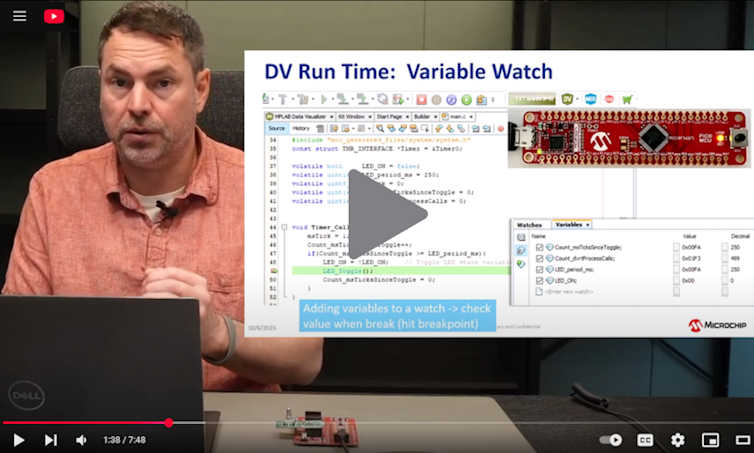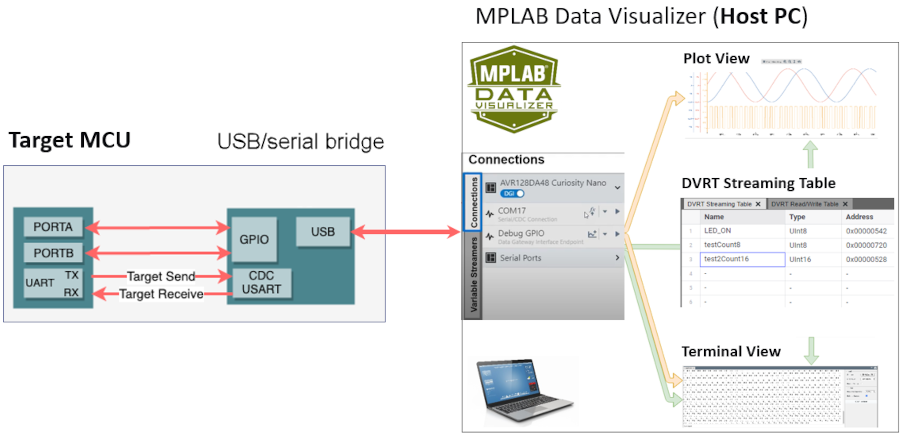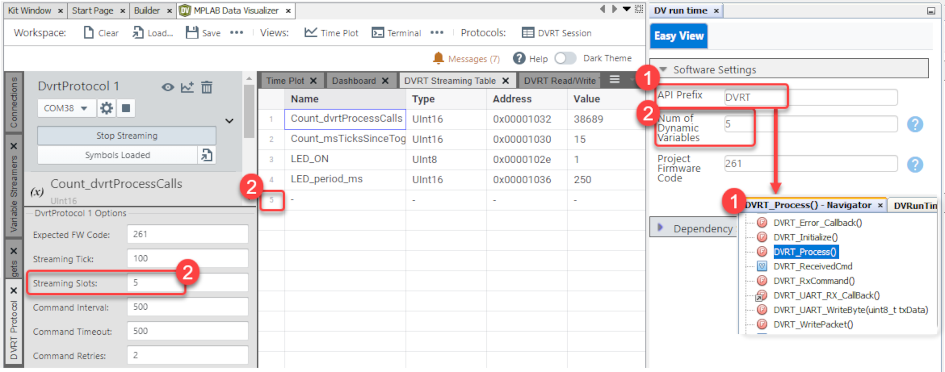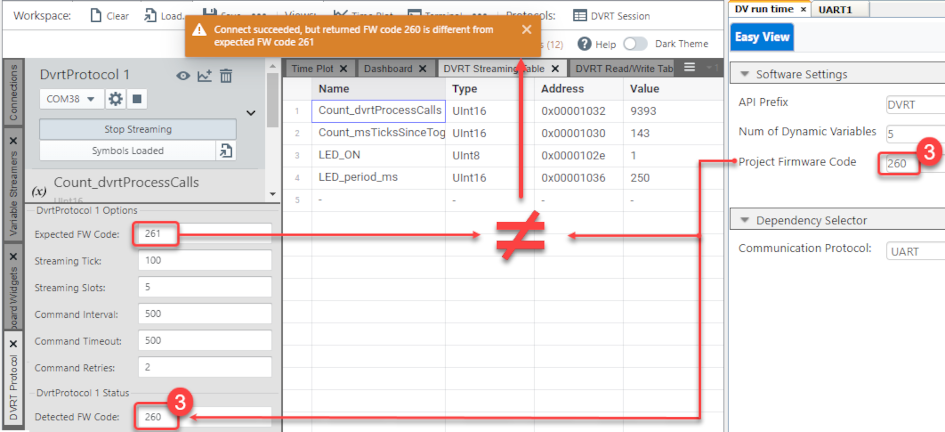1 Data Visualizer Run Time (DVRT) Basics
The Data Visualizer Run Time (DVRT) functionality on the  MPLAB® Data Visualizer, running on a host computer, is
supported by an MPLAB Code Configurator (MCC) Melody Library, communicating
with the Data Visualizer via a Universal Asynchronous Receiver/Transmitter (UART)
connected to your computer’s COM port.
MPLAB® Data Visualizer, running on a host computer, is
supported by an MPLAB Code Configurator (MCC) Melody Library, communicating
with the Data Visualizer via a Universal Asynchronous Receiver/Transmitter (UART)
connected to your computer’s COM port.
- How to Use the Data Visualizer Run Time Library: Code snippets and examples, detailing how to add the DVRT library to any MCC Melody supported device
- MPLAB Discover: MCU/PMU Examples, “DVRT”, Content Type:
“Melody”
 (uncheck MCC Melody
Content type to find all DVRT examples).
(uncheck MCC Melody
Content type to find all DVRT examples).
1.1 DVRT Quickstart
DV Run Time: MCC Melody Configuration
- Application Builder ➔ Add Component ➔
Data Streamer Library (adds the UART driver)
 Note: If not available: DV Run Time is not included as default content. Therefore, it must first be added through the MCC Content Manager before it can be selected from Builder Add Component or Device Resources.
Note: If not available: DV Run Time is not included as default content. Therefore, it must first be added through the MCC Content Manager before it can be selected from Builder Add Component or Device Resources. - UART ➔ UART PLIB Selector: <Select
Serial/CDC port UART>

- UART Pins Configuration:
- Data Visualizer Setup for DV Run Time


1.2 DVRT System Overview

1.3 Connecting the MPLAB® Data Visualizer DVRT Protocol Options to the Melody Library Fields
The image below shows the MPLAB Data Visualizer integrated into MPLAB X IDE, with a DVRT Protocol Session on the left side and, the configuration options for the MCC Melody DV Run Time library on the right side.
The default configurations are sufficient for operation; however, this section provides
guidance for understanding how to use the DVRT protocol.
- API Prefix: This text will be the prefix for all APIs associated with the DVRT.
- Number of Dynamic
Variables: This number has to be higher or equal to (>=) the
number of variables in the DVRT Streaming Table in the Data Visualizer. On the
Data Visualizer side, this is configured by setting the number of Streaming
Slots.
Figure 1-3. MPLAB® Data Visualizer DVRT Protocol Session (PC Side, on the left) with DV Run Time Library (MCU Side, on the right) 
- Project FW Code: Can be
used to distinguish between different projects. The Data Visualizer compares the
Firmware Code read from the target to an expected value. A warning is displayed
if the values don’t match.
 Note: The default value of the Project Firmware Code matches the Expected FM Code in the Data Visualizer. This Project Firmware Code is used in the
Note: The default value of the Project Firmware Code matches the Expected FM Code in the Data Visualizer. This Project Firmware Code is used in theDVRunTime_Config.h. Note: In the DVRT library, the U suffix (e.g., 8U, 20U, 200U) denotes an unsigned integer constant, ensuring MISRA-compliant type clarity and safe use with types like uint8_t or uint16_t.
Note: In the DVRT library, the U suffix (e.g., 8U, 20U, 200U) denotes an unsigned integer constant, ensuring MISRA-compliant type clarity and safe use with types like uint8_t or uint16_t.
